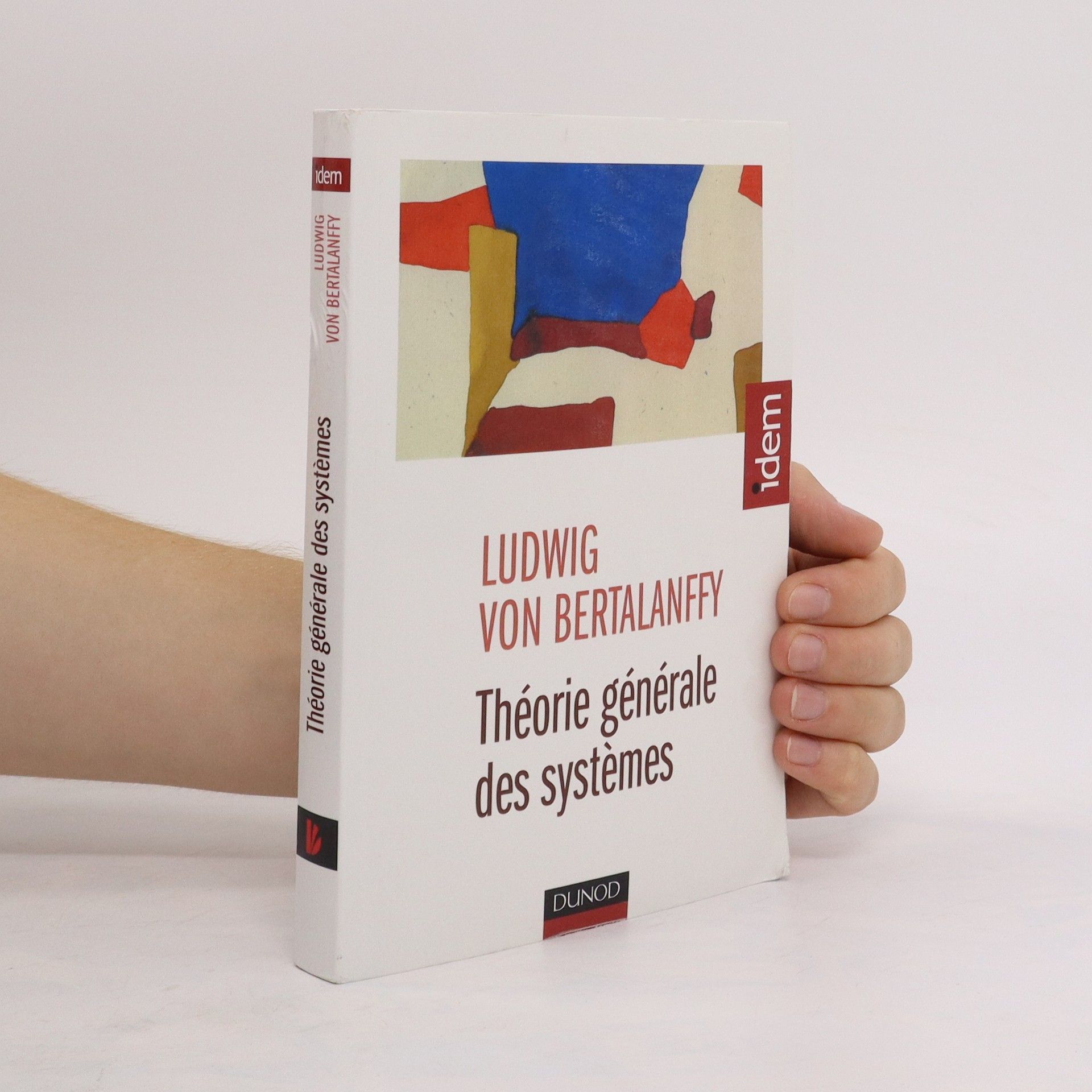Le nouveau paradigme systémique initié par la théorie générale des systèmes est à l'origine de la nouvelle conception de l'univers selon laquelle matière et esprit sont perçus comme des éléments indissociables d'un vaste processus d'évolution non linéaire. La théorie générale des systèmes est aujourd'hui devenue une source d'inspiration fondamentale pour toute approche non réductionniste et non mécaniciste de l'ensemble des phénomènes du vivant. La réédition de ce classique de l'histoire des idées scientifiques permet de mesurer l'ampleur de la révolution scientifique dont L.V. Bertalanffy jeta les bases voici près de cinquante ans.
Ludwig von Bertalanffy Livres
Karl Ludwig von Bertalanffy était un biologiste d'origine autrichienne, reconnu comme l'un des fondateurs de la théorie générale des systèmes (GST). Ses travaux se sont concentrés sur l'exploration des systèmes ouverts, tels que les organismes vivants, proposant que les lois thermodynamiques classiques s'appliquent aux systèmes fermés mais pas nécessairement aux systèmes ouverts. Le modèle mathématique de Bertalanffy sur la croissance des organismes est encore utilisé aujourd'hui. Son approche interdisciplinaire a relié la biologie à la cybernétique et à d'autres domaines, jetant les bases de nouvelles compréhensions des interactions complexes.







General System Theory
- 295pages
- 11 heures de lecture
The only book on major theory still studied in colleges, with new foreward by System Theory scholars that contextualises and applies theory for modern readers.
General System Theory
Foundations, Development, Applications
Gathered here are Ludwig von Bertalanffy's writings on general systems theory, selected and edited to show the evolution of systems theory and to present it applications to problem solving. An attempt to formulate common laws that apply to virtually every scientific field, this conceptual approach has had a profound impact on such widely diverse disciplines as biology, economics, psychology, and demography.
Problems of Life: an Evaluation of Modern Biological Thought
- 236pages
- 9 heures de lecture
This work has been selected by scholars as being culturally important and is part of the knowledge base of civilization as we know it. This work is in the public domain in the United States of America, and possibly other nations. Within the United States, you may freely copy and distribute this work, as no entity (individual or corporate) has a copyright on the body of the work. Scholars believe, and we concur, that this work is important enough to be preserved, reproduced, and made generally available to the public. To ensure a quality reading experience, this work has been proofread and republished using a format that seamlessly blends the original graphical elements with text in an easy-to-read typeface. We appreciate your support of the preservation process, and thank you for being an important part of keeping this knowledge alive and relevant.
Biologie und Medizin
- 22pages
- 1 heure de lecture
Biophysik des Fließgleichgewichts
Einführung in die Physik offener Systeme und ihre Anwendung in der Biologie
Inhaltsverzeichnis 1. Einführung 1.1. Entwicklung der Theorie der offenen Systeme 1.2. Sinn und Probleme der Modellbildung in der Biologie 1.2.1. Modelle in der Biologie 1.2.2. Original-Modell-Angleichung 1.3. Grundbegriffe der allgemeinen Systemtheorie 1.3.1. Forderungen der allgemeinen Systemtheorie 1.3.2. Begriffsbestimmung „System“ 1.3.3. Eigenschaften allgemeiner Systeme 1.3.4. Relationale und metrische Systeme 1.4. Der Organismus als offenes System im Fließgleichgewicht 2. Theorie der offenen Systeme 2.1. Systembegriff in den Naturwissenschaften 2.2. Biologische Systeme als n-stellige Relationen 2.2.1. Allgemeine Formulierung 2.2.2. Beispiel 2.3. Systembeschreibung mit Differentialgleichungen 2.3.1. Systeme gewöhnlicher linearer Differentialgleichungen 2.3.2. Lösungsmethode und Eigenschaften 2.4. Spezielle Probleme linearer Differentialgleichungen 2.4.1. Eigenwertprobleme 2.4.2. Nichtnegative Lösungsfunktionen 2.4.3. Systeme mit nichtkonstanten Koeffizienten 2.5. Eigenschaften offener Systeme 2.5.1. Allgemeine Gleichungen 2.5.2. Fließgleichgewicht 2.5.3. Einfache Modelle offener Systeme 2.5.4. Overshoot und falscher Start 2.5.5. Äquifinalität 3. Anwendungen der Theorie in der Biologie 3.1. Stoffwechselgeschehen 3.1.1. Hierarchische Ordnung des Stoffwechsels